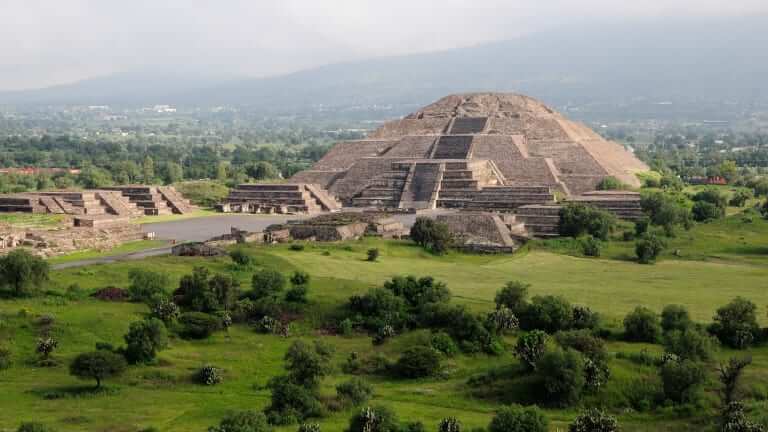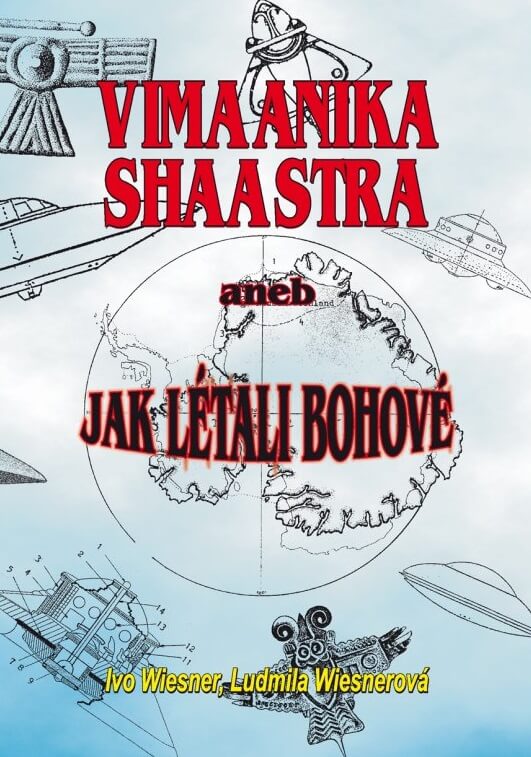
The tunnels under the pyramids are rich in mercury, mica and pyrite (part 1)
 14. 10. 2020
14. 10. 2020

For us fans of the Invaders of Antiquity series, some of the works are truly exceptional. Episode 7 of the 12th series, entitled 'City of the Gods', is a great example of this. Even though sometimes its big fans sometimes doubt wild interpretations and questions about aliens, this series is stunning. And it is this part that is so fascinating that this article dedicated to it will be divided into two parts.
The first part deals with the Central American pre-Greek city of Teotihuacan, founded sometime around 400 BC Teotihuacan, translated from the Aztec language nahuatl, means "the place where people became gods." This name can also be translated as "birthplace of the gods," or "place where the gods were born. ”No one knows for sure who built the city — not even the Aztecs who gave it its name. It is a mystery that, of course, points to the possible presence of ancient aliens. In this case, it will be even more likely, as you will soon learn. It should be noted that some questions about Teotihuacan are difficult for traditional archaeologists to find answers to.
Researchers at the Smithsonian Institution write about him:
"They took their secrets with them. Today, even after more than a century of archaeological research, there is still an unusual amount of what we do not know about the people of Teotihuacan. They had some kind of quasi-hieroglyphic writing, but we haven't deciphered it yet; we don't know what language was spoken in the city or what the locals called the place. We have some idea of their religion, but we don't know much about their priesthood, and the relative piety of the average city dweller, or the composition of the court or army, is also unknown. '
"We do not know exactly what led to the founding of the city, who ruled it for half a millennium of its expansion, or what caused its demise. As Matthew Robb, curator of Central American Art at the San Francisco Museum in San Francisco, told me, "This city wasn't built to answer our questions."
Teotihuacán
Teotihuacán, as the largest city in the Western Hemisphere before the beginning of the 15th century, has an area of just over 20 km2. During the day, it functioned much like today's Manhattan, with thousands of family-style dwellings built around the center. This ancient Central American metropolis seems to have appeared out of the blue. With a population of around 100 to 000 at its peak, the city required sophisticated infrastructure and access to many raw materials. However, there were no military buildings at all, which may be one of the reasons why it disappeared after 200 years.
Some theories suggest that there was a revolt of the poorer classes against the elite. There is evidence of a great fire from the time of the city's demise, and proponents of theories about ancient astronauts believe that it was caused by the explosion of the main Pyramid and the Process Class of the Dead. They assume that this complex served for some time as an electromagnetic power plant, which drew energy from the Earth's resonance. Was mercury part of Teotihuacan's spacecraft technology? Given that these elements are mentioned in ancient texts as an integral part of flying ships called Vimana, it seems possible.
Aliens on Earth
"So we're dealing with the idea that mercury found in archeological sites is actually part of the propulsion of some of the machines used by aliens here on Earth," says writer David Childress. In the second part, we take a closer look at the discoveries of Teotihuacan and the giant fire that, according to proponents of theories about ancient astronauts, broke out in the "power plant."
Tip from Sueneé Universe
Ivo Wiesner: Vimaanika Shaastra
The ancient Indian epic VIMAANIKA SHAASTRA became known to researchers in the field of mysteries of history, among other things, thanks to Erich von Däniken, who quotes it in his book "Memories of the Future".
The work, which has been preserved in the so-called Šastra language, is a unique "technical manual" for pilots of flying technical equipment, which was constructed millennia ago.





 1
1

